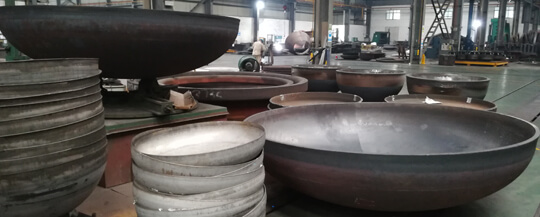The head is a commonly used component, and its shape and structure are different for different requirements. Generally, the more common shapes in our daily work include oval, dish, spherical crown, and cone. These kinds of heads are used to withstand internal pressure. What is the difference between them? Let's take a look.
The first type is an elliptical head. The circumferential stress and meridional stress of the head are not constant on the casing, and are varied at various points, such as his hoop stress and axis at the apex. The stresses are equal, and the stresses on the equator are different. If the internal pressure of the head is relatively uniform, the axial stress is always the tensile stress, which gradually decreases from the maximum at the apex to the equator to the minimum.
Due to the shallower the head, the higher the compressive stress at the edge of the head, the lower the short axis ratio of the head is usually limited to 2.6 when making the head. The requirements for the thickness of the head are to be met on the premise that the strength is met. For some large-diameter thin-walled oval heads, the stiffness requirements are also considered.
The second type is a torispherical head, which is a head consisting of a spherical part, a straight side section and a transition zone. The magnitude of the edge stress of torispherical head is related to the ratio of the radius of the transition zone to the radius of the spherical surface, and inversely proportional to the fact that the smaller the ratio, the more severe the curvature boundary mutation and the greater the edge stress. Therefore, in order to reduce the edge stress of the butterfly head, the area designed on the head is used.
The third type is a spherical head. This type of head can only be used for occasions where the pressure is not high, because the radius of curvature of the spherical surface and the cylinder will be abrupt, and the two shells have no common tangent. There is a lateral thrust, so a considerable amount of discontinuous stress is generated. This also determines that the fillet welds that connect the head to the barrel must be fully welded.
The last thing to say is the conical head. In the case of an internal pressure without a hem flange, the main part of the body is subjected to internal pressure and the maximum film stress is at the top. At the junction of the cone and the cylindrical part, due to the geometric discontinuity, the radius of curvature is abrupt, so that a large lateral thrust is generated at this place, causing a large edge stress and being prone to bending.
After understanding the types of so many kinds of heads, we will not be blind when we choose. The correct choice of the head is also beneficial to our production work.
